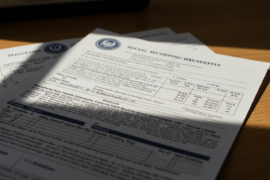This article may contain references to products or services from one or more of our advertisers or partners. We may receive compensation when you click on links to those products or services. Nonetheless, our opinions are our own.
A Home Equity Line of Credit (HELOC) may be the solution you have been looking for if you want to borrow against the equity in your home for renovations, debt consolidation, or other financial purposes. With so many options available today, finding the right fit for your unique circumstances can feel overwhelming. To simplify things, we’ve curated a selection of the best HELOC loans that stand out due to their competitive rates, flexible terms, and excellent customer service.
In this overview featuring eight standout HELOC options, you’ll discover key features such as interest rates, repayment structures, and credit requirements to help guide your decision-making process. Whether planning a major renovation project or simply leveraging your home’s value for other expenses, our insights will equip you with the knowledge needed to choose wisely.
- Discover the Benefits of a HELOC: Flexibility, Competitive Interest Rates, and Access to Home Equity
- How HELOC Loans Work: A Revolving Line of Credit With Adjustable Rates
- Compare Lenders: Top Banks and Credit Unions Offering the Best HELOCs
- Key Features to Look for in a HELOC
- Assessing Eligibility: Credit Score, Loan-to-Value Ratio, and Income Verification
- Hidden Costs of HELOCs: What to Watch For
- Tax Implications of Using a HELOC
- Fixed vs. Variable Rates: Which HELOC Option is Best?
- Common HELOC Uses: How This Financing Can Help You
- Managing HELOC Risks: Avoid Overspending
-
Frequently Asked Questions (FAQs)
- What are the primary options someone with a low mortgage interest rate considering borrowing against their home for repairs and renovations should explore, and what are the fundamental differences between them, as highlighted in the discussion?
- Given the current interest rate environment, what are some rate expectations and concerns regarding HELOCs and HELOANs?
- Why might someone in the original poster’s situation (low existing mortgage rate) still consider a HELOC or HELOAN instead of a cash-out refinance?
- What are some risks associated with taking out a HELOC, especially in the context of potential future economic conditions?
- Are there any alternative financing options mentioned besides HELOCs and HELOANs, and what are their potential advantages or disadvantages?
- What considerations beyond just the interest rate should borrowers keep in mind when deciding between a HELOC and a HELOAN?
- According to the discussion, what role do local financial institutions like credit unions and mortgage brokers seem to play in the HELOC/HELOAN market?
- What is the general sentiment among some commenters regarding the financial prudence of borrowing against a home for repairs and renovations, and how does the original poster respond to this?
- Final Thoughts
- Recommended Reads
Discover the Benefits of a HELOC: Flexibility, Competitive Interest Rates, and Access to Home Equity
Home Equity Lines of Credit (HELOCs) offer homeowners unique advantages, making them an attractive option for financing personal projects or consolidating debts. One key benefit is their flexibility. Unlike traditional loans, HELOCs allow you to borrow only what you need when needed. This is especially useful for ongoing projects where costs may fluctuate over time.
HELOCs often come with competitive interest rates, typically lower than those associated with credit cards and unsecured personal loans. This helps make larger purchases more affordable while also making repayments easier over time.
Tapping into your home equity can be a valuable resource for:
- Home renovations
- Debt consolidation
- Education Expenses
- Emergency funds
- Major life events like weddings or medical expenses
This combination of flexibility and cost-effectiveness highlights why understanding HELOCs is crucial to making wise financial decisions.
How HELOC Loans Work: A Revolving Line of Credit With Adjustable Rates
A Home Equity Line of Credit (HELOC) functions similarly to a credit card, giving homeowners access to funds based on the equity they have built up in their property. This means you can borrow against your home’s value, with a credit limit set by the lender based on your home’s appraised value and the remaining mortgage balance.
Key features of HELOCs include:
- Draw Period: Most HELOCs have an initial draw period (typically 5–10 years) during which you can withdraw funds as needed.
- Repayment Terms: After the draw period ends, borrowers enter a repayment phase, where they begin paying off both principal and interest.
- Flexible Withdrawals: You only pay interest on the amount withdrawn, making it a flexible borrowing option for unexpected expenses or large projects.
A HELOC provides financial flexibility when needed and allows homeowners to manage repayments in accordance with their financial goals.
Compare Lenders: Top Banks and Credit Unions Offering the Best HELOCs
When searching for the best HELOC, comparing lenders based on terms, fees, and customer service is essential. Here are some top options:
- Bank of America: Offers flexible draw periods and no closing costs with an easy-to-use online platform.
- Chase: Provides a variable interest rate that can be reduced with autopay from a Chase checking account.
- PennyMac: Known for competitive rates, fast approval, and strong communication throughout the borrowing process.
- PenFed Credit Union: Features low annual fees and attractive interest rates with a member-focused approach.
- Navy Federal Credit Union: Offers favorable rates exclusively for military personnel and their families, with dedicated home financing support.
Each lender has its strengths, so comparing them based on interest rates, payment flexibility, and fees will help you find the best fit for your financial needs.
Key Features to Look for in a HELOC
When evaluating a HELOC, consider these crucial factors:
- Draw Period Lengths: Typically 5-10 years, followed by a repayment phase of up to 20 years.
- Repayment Options: Some lenders offer interest-only payments during the draw period, which can lead to more significant balances later.
- Interest Rate Structures: Fixed rates offer stability, while variable rates may start lower but fluctuate over time.
- Annual Fees: Some lenders charge maintenance fees, which can impact the overall cost of borrowing.
Understanding these features will help you select a HELOC that aligns with your financial situation.
Assessing Eligibility: Credit Score, Loan-to-Value Ratio, and Income Verification
To qualify for a HELOC, lenders evaluate:
- Credit Score Requirements: Most lenders require a credit score between 620 and 700. Higher scores may secure better terms.
- Loan-to-Value (LTV) Ratio: Generally, lenders prefer an LTV of 80% or lower, meaning your existing mortgage balance plus the HELOC should not exceed 80% of your home’s appraised value.
- Income Verification: Lenders assess income through pay stubs, tax returns, and bank statements. Self-employed applicants may need to provide profit-and-loss statements.
Preparing these documents in advance can streamline approval and improve loan terms.
Beyond interest rates, borrowers should consider potential hidden costs:
- Appraisal Fees: Usually $300–$700, depending on your location.
- Closing Costs: Can range from 2% to 5% of the credit line amount and include title insurance and legal fees.
- Ongoing Maintenance Fees: Some lenders charge annual maintenance or inactivity fees if the HELOC is not regularly used.
Factoring these costs into your decision will help avoid unexpected financial burdens.
Tax Implications of Using a HELOC
HELOC interest may be tax-deductible under certain conditions. The IRS allows deductions if funds are used for:
- Home purchases
- Home improvements
- Mortgage refinancing (subject to loan limits)
The total deductible mortgage amount cannot exceed $750,000 (or $375,000 for married couples filing separately). Homeowners should consult a tax professional for personalized guidance.
Fixed vs. Variable Rates: Which HELOC Option is Best?
- Fixed-Rate HELOC: Provides predictable payments, which is ideal for those who prefer stability.
- Variable-rate HELOC: This type typically starts with lower rates but fluctuates over time. It is suitable for those comfortable with potential rate increases.
Choosing the proper structure depends on your financial goals and risk tolerance.
Common HELOC Uses: How This Financing Can Help You
HELOC funds can be used for:
- Home renovations to increase property value.
- Debt consolidation to lower interest payments.
- Education expenses as an alternative to student loans.
- Emergency funds for unexpected costs like medical bills.
Used strategically, a HELOC can be a powerful financial tool.
Managing HELOC Risks: Avoid Overspending
While HELOCs offer flexibility, risks include:
- Variable Interest Rates: Can rise unexpectedly, increasing repayment costs.
- Debt Accumulation: Borrowers must manage spending wisely to avoid excessive debt.
- Lack of financial discipline: Easy access to funds can lead to poor financial decisions.
A clear repayment plan helps mitigate these risks.
Frequently Asked Questions (FAQs)
What are the primary options someone with a low mortgage interest rate considering borrowing against their home for repairs and renovations should explore, and what are the fundamental differences between them, as highlighted in the discussion?
The primary options discussed are a Home Equity Line of Credit (HELOC) and a Home Equity Loan (HELOAN). A HELOC is generally an adjustable-rate line of credit, meaning the interest rate can fluctuate over time, as has been the case recently. A HELOAN, on the other hand, typically offers a fixed interest rate for the life of the loan. The key difference highlighted is the interest rate structure: HELOCs risk rising rates, while HELOANs provide predictable monthly payments.
Given the current interest rate environment, what are some rate expectations and concerns regarding HELOCs and HELOANs?
The discussion suggests that current interest rates for HELOCs and HELOANs are significantly higher than the 2.375% mortgage rate the original poster has. Rates for HELOCs are mentioned to be above 7% and often above 8%, with one specific mention of 7.24%. Concerns are raised about the adjustable nature of HELOCs, which have already seen substantial increases. While the Fed’s tightening cycle might be nearing its end, the risk of further rate increases with a HELOC is noted. Fixed-rate HELOANs are also at high rates, leading to borrowers facing either high fixed or adjustable rates.
Why might someone in the original poster’s situation (low existing mortgage rate) still consider a HELOC or HELOAN instead of a cash-out refinance?
Someone with a very low existing mortgage rate would consider a HELOC or HELOAN to avoid refinancing their entire mortgage at current, much higher interest rates. Using a second lien product like a HELOC or HELOAN for a specific amount, they can preserve their favorable first mortgage rate on most of their home loan balance.
What are some risks associated with taking out a HELOC, especially in the context of potential future economic conditions?
As emphasized in the discussion, the main risk associated with a HELOC is its adjustable interest rate. If interest rates continue to rise or remain high, the cost of borrowing through a HELOC can increase significantly, making repayments more burdensome. One participant suggests that if a borrower expects an economic downturn, a high-rate adjustable HELOC might be suitable, implying that rates could decrease in such a scenario, but this is speculative.
Are there any alternative financing options mentioned besides HELOCs and HELOANs, and what are their potential advantages or disadvantages?
One alternative mentioned is an unsecured personal loan. The potential advantages cited are that the rates might be similar to those of a HELOC or HELOAN (for a smaller loan amount), and it may offer a quicker turnaround with no fees tied to the house. The disadvantage isn’t explicitly stated but would likely involve potentially higher interest rates than secured loans, especially for more significant amounts, and possibly shorter repayment terms.
What considerations beyond just the interest rate should borrowers keep in mind when deciding between a HELOC and a HELOAN?
Beyond the interest rate (fixed vs. adjustable), the discussion highlights the importance of knowing the specific amount of cash needed. If the amount is well-defined, a fixed-rate HELOAN might be preferable for its predictability. Additionally, one experienced loan originator points out that borrowers should consider their current mortgage balance and the desired draw amount when comparing a HELOC/HELOAN to a cash-out refinance. A seemingly low interest rate on a smaller HELOC might still result in a higher overall interest expense than refinancing a small remaining mortgage balance, even at a higher rate.
According to the discussion, what role do local financial institutions like credit unions and mortgage brokers seem to play in the HELOC/HELOAN market?
Several commenters suggest checking with local banks, credit unions, or mortgage brokers for HELOC and HELOAN options. Credit unions are mentioned explicitly as potentially offering better rates. Mortgage brokers, like the ones who offered assistance in Ohio, can provide access to various lenders and may offer competitive rates. This suggests that the local market can significantly impact the availability and terms of these loan products.
What is the general sentiment among some commenters regarding the financial prudence of borrowing against a home for repairs and renovations, and how does the original poster respond to this?
Several commenters expressed concern about the financial wisdom of borrowing for repairs, especially those that might not significantly increase the home’s value. They question the long-term implications of continuously borrowing against the house and suggest saving instead. The original poster, however, clarifies that they were not seeking personal finance advice but information on lenders and rates from professionals in the loan origination industry. They also point out that loan originators would not make money if everyone only made the “best” financial decisions. This highlights a difference in perspective between financial prudence and the practicalities of accessing funds for necessary home repairs.
Final Thoughts
A HELOC can be a valuable financial resource, but understanding its terms, risks, and costs is essential. By researching lenders, evaluating interest rates, and planning repayments wisely, homeowners can use a HELOC effectively to meet their financial goals.

Reviewed and edited by Albert Fang.
See a typo or want to suggest an edit/revision to the content? Use the comment form below for feedback.
At FangWallet, we value editorial integrity and open collaboration in curating quality content for readers to enjoy. Much appreciated for the assist.
Did you like our article and find it insightful? We encourage sharing the article link with family and friends to benefit as well - better yet, sharing on social media. Thank you for the support! 🍉
Article Title: Best HELOC Loans
https://fangwallet.com/2025/03/22/best-heloc-loans/The FangWallet Promise
FangWallet is an editorially independent resource - founded on breaking down challenging financial concepts for anyone to understand since 2014. While we adhere to editorial integrity, note that this post may contain references to products from our partners.
The FangWallet promise is always to have your best interest in mind and be transparent and honest about the financial picture.
Become an Insider
Editorial Disclaimer: The editorial content on this page is not provided by any of the companies mentioned. The opinions expressed here are the author's alone.
The content of this website is for informational purposes only and does not represent investment advice, or an offer or solicitation to buy or sell any security, investment, or product. Investors are encouraged to do their own due diligence, and, if necessary, consult professional advising before making any investment decisions. Investing involves a high degree of risk, and financial losses may occur including the potential loss of principal.
Source Citation References:
+ Inspo
Investopedia. (n.d.). Investopedia. https://www.investopedia.com/
Wikipedia, the free encyclopedia. (n.d.). https://www.wikipedia.org/
Fang, A. (n.d.). FangWallet — Personal Finance Blog on Passive Income Ideas. FangWallet. https://fangwallet.com/
Google Scholar. (n.d.). Google Scholar. https://scholar.google.com/
There are no additional citations or references to note for this article at this time.












































